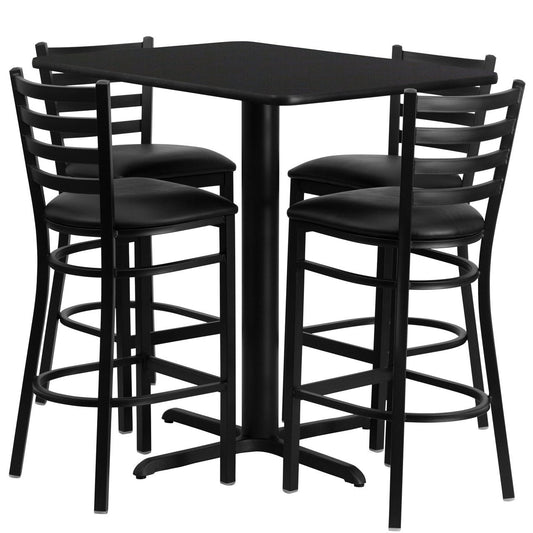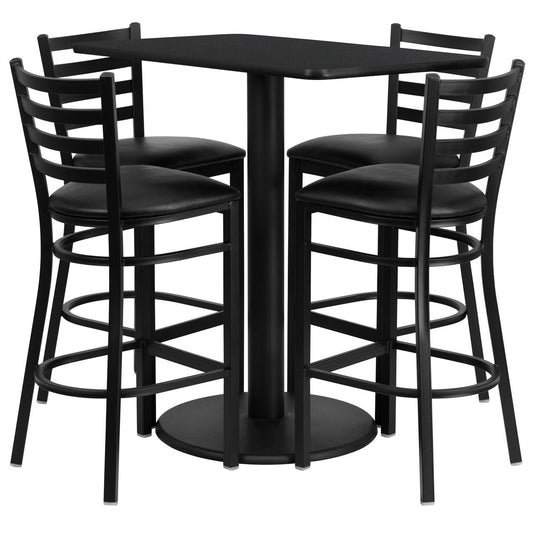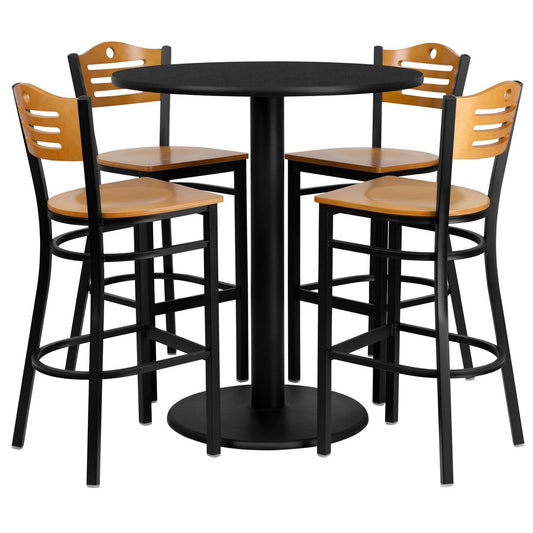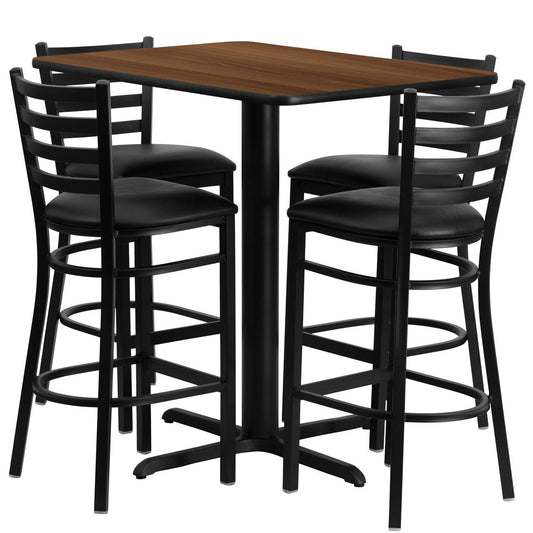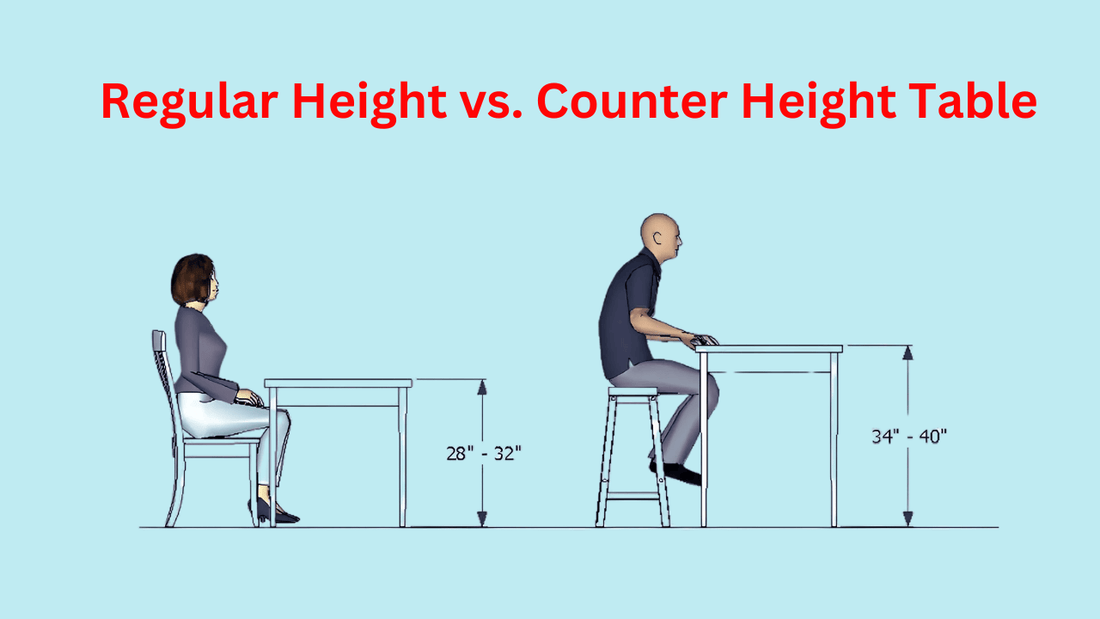
Regular Height vs. Counter Height Table Sets: Key Differences Explained
Share
Your dining table is that piece of furniture where conversations take place, meals turn into memories, and you and your family unwind. However, when it comes to choosing between a regular height dining table and counter height dining table, you have to make your decision wisely. You just cannot think about aesthetics at that time, you have to consider functionality as well.

So, before you come to a decision, ask yourself:
- Do you need a furniture addition to make your space visually appealing? Or
- Do you need a space-efficient solution for casual dining?
When you are clear with what you need, you can make an informed decision. In this guide, we’ll break down the differences, weigh the benefits, and help you find the perfect fit for your dining space and lifestyle.
Understanding Table Heights
Before we move forward to know the differences between table types, you must first understand the stand height dining tables and the counter height tables. But, wait! Do you also want to know what height is a bar height table? Let’s break it down for you in a tabular representation.

| Table Type | Height Range | Description |
| Regular Dining Table | 28 - 30 inches | This one is the first pick for most dining rooms as it offers a classic and comfortable seating height. It goes well with standard dining chairs and offers a smooth dining experience. |
| Counter Height Table | 34 - 36 inches | These counter height tables are a bit taller than regular dining tables. It is the perfect choice for people looking to create a casual and modern feel. You can find them in open-concept and small dining spaces. |
| Bar Height Table | 40 - 42 inches | One of the tallest table options that you can pair with barstools. If you wish to create a pub-style atmosphere, consider buying this one. |
Regular Height Dining Tables
A regular height dining table is the most common table you can find in cafes, households, and restaurants. The balanced and comfortable seating arrangements of the table make it an ideal choice for casual gatherings, daily meals, and casual gatherings.
What Are the Benefits of a Regular Dining Table
Comfortable for All Ages
These tables have a lower height, making them accessible and comfortable for people of all ages, including children and older adults. Unlike higher tables, you do not have to climb onto stools, which eliminates the risk of falling or feeling discomfort. It does not matter if it's a toddler in a booster seat or an elderly person needing stability, the table is perfect for all.
Classic and Versatile
One of the most standout features of this table is that it can fit seamlessly into both traditional and modern dining spaces. So, you don’t have to worry about not being able to find a perfect furniture piece for your space. A regular height dining table comes in a wide range of materials, styles, and finishes, making them blend seamlessly into any decor theme.
Better for Formal Dining
Formal dining settings typically use standard-height tables because they allow for proper posture and table manners. Fine dining restaurants and formal dining rooms often favor this height. This height is also ideal for multi-course meals, as guests can comfortably rest their arms on the table while maintaining an upright posture. It creates a refined atmosphere, perfect for special occasions and elegant dinner parties.
Easier to Pair with Existing Furniture
Since most dining chairs and benches are designed to complement standard-height tables, finding matching furniture is easier. Whether you are upgrading your dining table or mixing and matching different styles, you’ll find a wide variety of options available. This flexibility makes it convenient to refresh your dining space without the hassle of replacing your entire furniture set.
Counter Height Tables
If you are not yet sure what is a counter height table, it is a table that strikes the perfect balance between casual and functional, making them a popular choice for bar, dining areas, and multipurpose spaces.
What Are The Benefits of a Counter Height Table?
Creates an Informal and Modern Look
These tables offer a contemporary feel and are just right for loft-style living space as well as open-concept.The long height of the table enhances the counters and creates a cohesive look. Counter height tables have clean lines and modern appeal, making them go well with minimalist, modern, and industrial aesthetics. Whether placed in a cozy breakfast nook or a stylish dining area, they add a touch of sophistication while maintaining a casual vibe.
Encourages Social Interaction
Knowing how tall are dining tables matter! If you have a taller surface, counter height tables can make it easy for people to stand and interact while dining. Due to this reason, they can be found in bars and casual dining areas. You and your guests are sure to have a more relaxed atmosphere if you add this furniture piece to your space.
Enhances a Small Space
The elevated height of a counter table can make a room feel more open by creating a visual separation between the bar and dining areas without the bulk of a traditional dining set. Because they sit higher, they draw the eye upward, giving the illusion of a taller and more spacious room. This makes them an excellent choice for apartments, condos, and small homes where maximizing space is essential. Their streamlined look also helps reduce clutter, making the area feel less crowded.
Multi-Purpose Functionality
Many counter height tables double as bar islands, providing additional counter space for meal prep while also serving as a dining surface. This dual-purpose design is perfect for multitaskers who need a flexible space for cooking, working, or socializing. Some models even include built-in storage, such as shelves or cabinets, making them even more practical for compact spaces.
Pairing these tables with high-quality metal bar stools ensures both comfort and style. Whether used for breakfast, work-from-home sessions, or evening cocktails, these tables adapt to your lifestyle seamlessly.
Choosing the Right Table for Your Space
When deciding between a regular height dining table and a counter height table, consider the following factors:
Space and Layout
- Let's say you have a small space but you wish to have a multi-functional dining area. In this scenario, only a counter height table can be a right fit.
- However, if you have a traditional dining room with enough space, go with a regular height table.
Intended Use
- If you prefer casual dining and entertaining, a counter height table enhances the social aspect of mealtime.
- But if you frequently host family dinners or if you have children at home who require easy access to the table, you cannot go wrong with choosing a regular dining table.
Comfort and Accessibility
- You cannot deny the fact that standard tables are more comfortable and accessible for all age groups.
- On the other hand, a counter height table might look visually appealing, but they are not the perfect pick for everyone in the home.
Aesthetic Preference
- If you want to achieve a modern and contemporary look, you can buy a counter height table.
- If a timeless and versatile design is your type, just stick to a regular height table.
The Bottom Line
Both regular height dining tables and counter height tables have their unique advantages and appeal. The choice between them depends on your space, dining needs, and personal style preferences. If comfort and versatility are top priorities, stylish regular height table sets for modern interiors are the best choice. However, if you want a modern, social-friendly option that blends well with open home layouts, a counter height table might be the perfect fit.
FAQs
Here are three FAQs in a more conversational tone:
1. What is the standard height for a dining table?
The standard height for a dining table is usually around 28 to 30 inches. The height of the table allows for comfortable seating and is best for both casual and fancy dinner parties.
2. What is the average height of a dining table?
On average, dining tables fall within the same 26-30 inch range. This makes them a great fit for most homes, restaurants, and even cozy cafes—just the right height for eating, chatting, and enjoying good company.
3. How do I decide between a regular height and a counter height table?
You first have to decide for what purpose and space you need a table for. Know who will be using the table and for what purpose and then make an informed decision.

